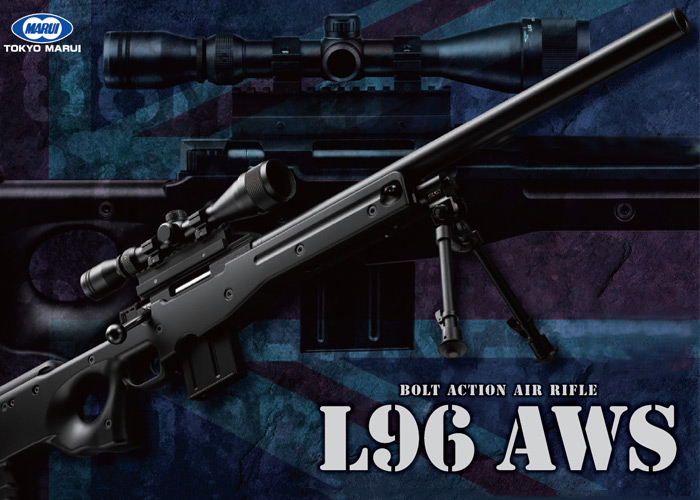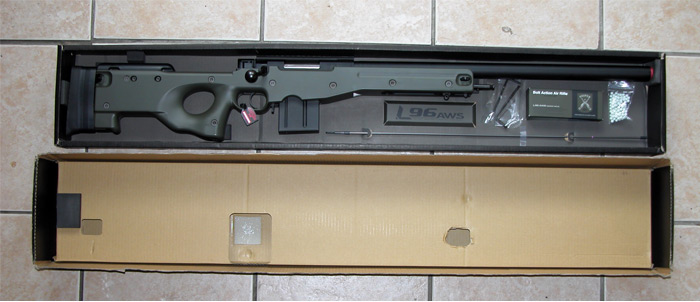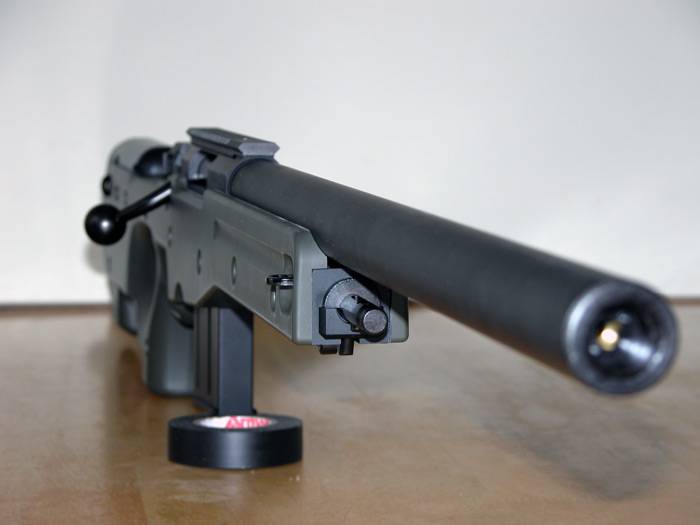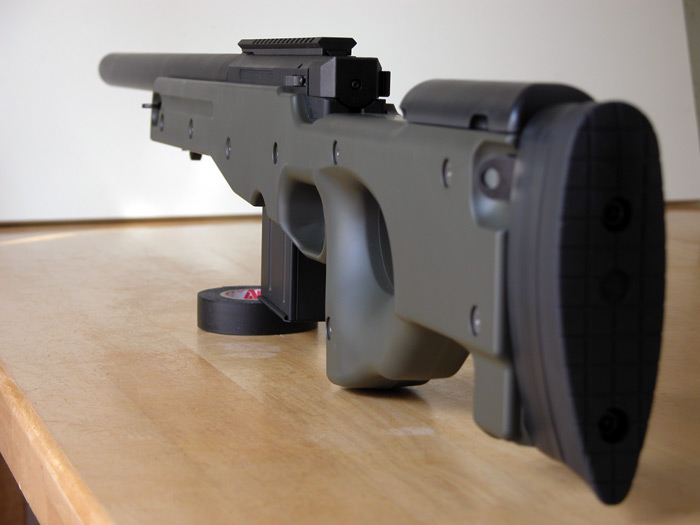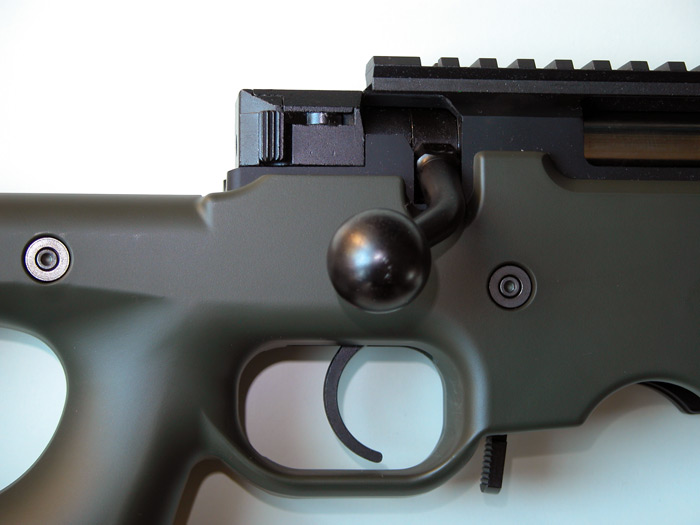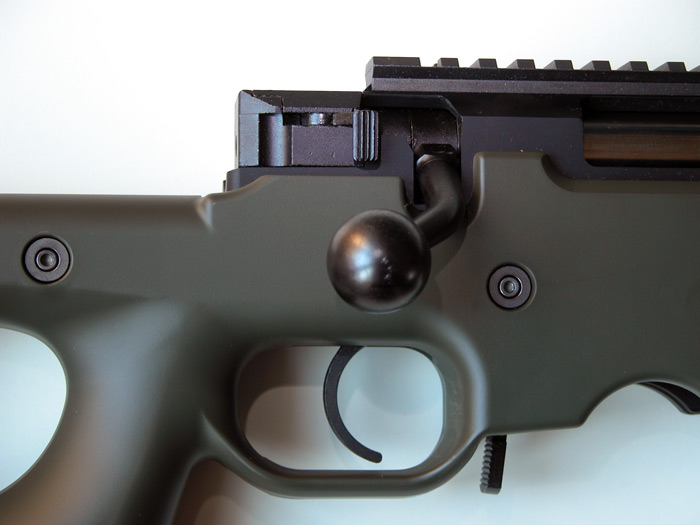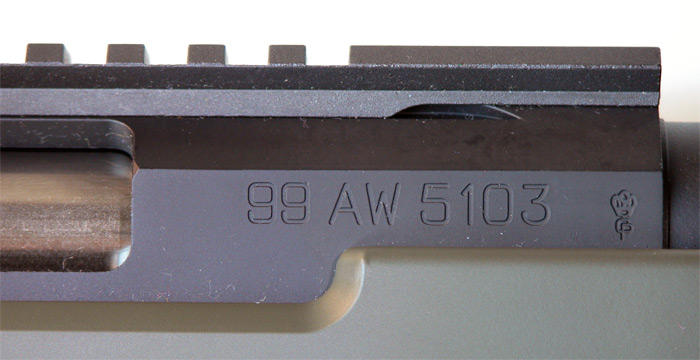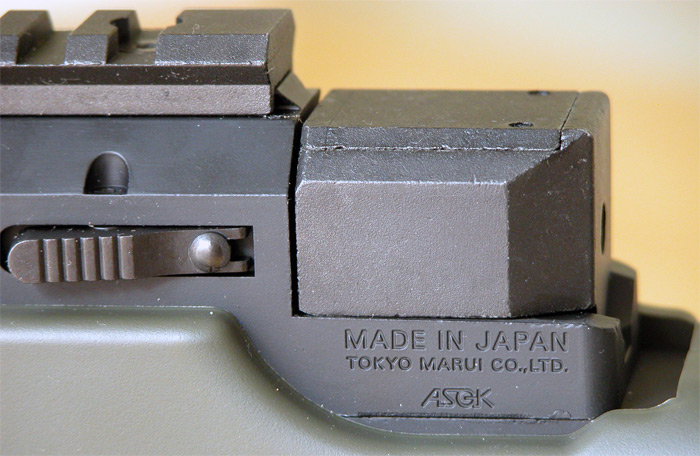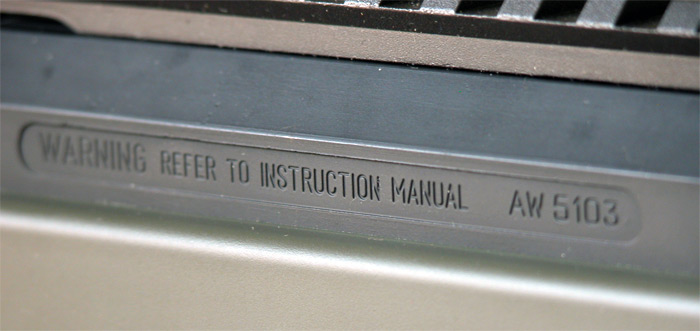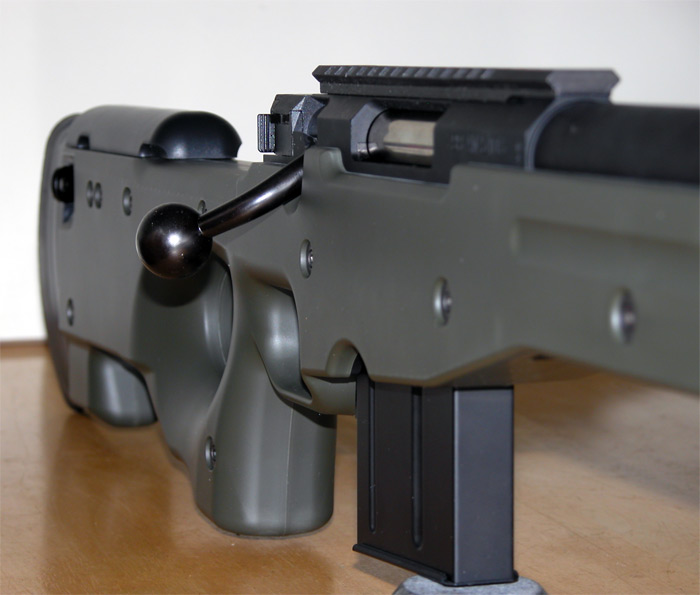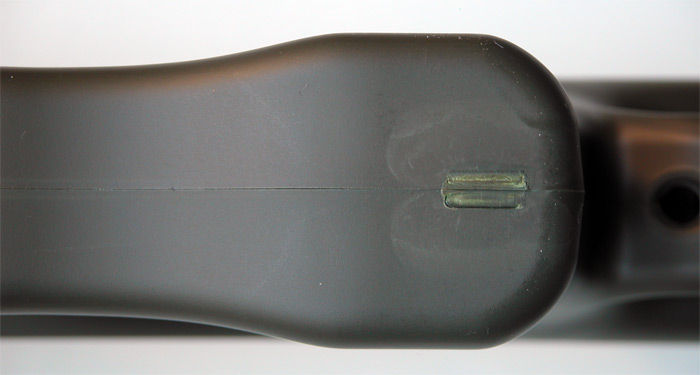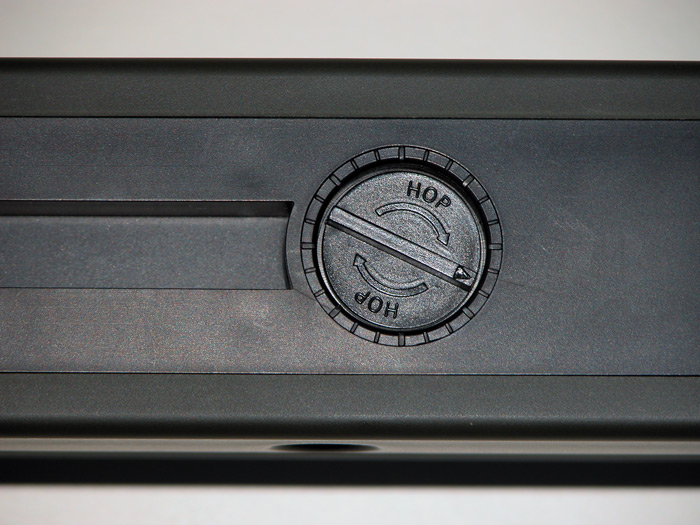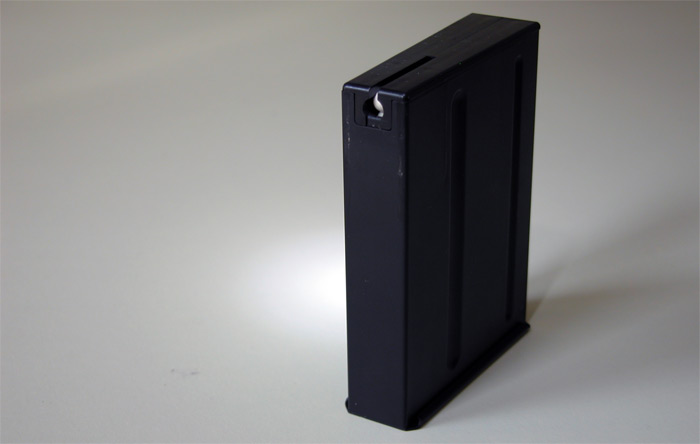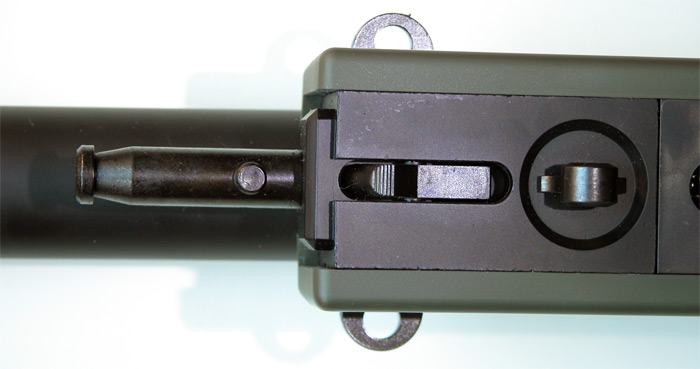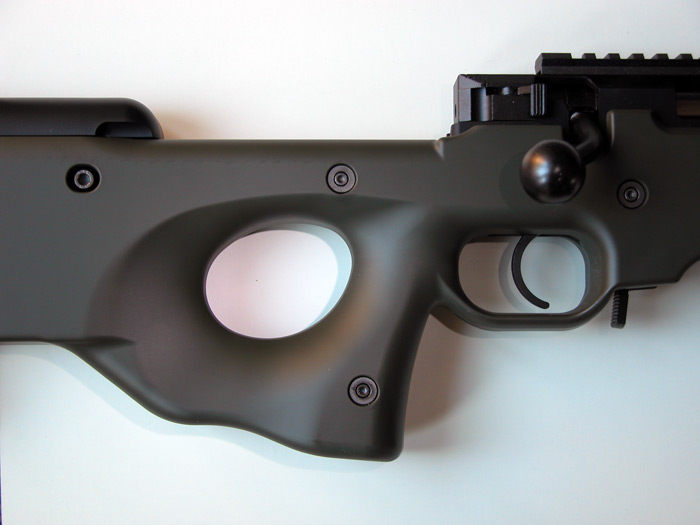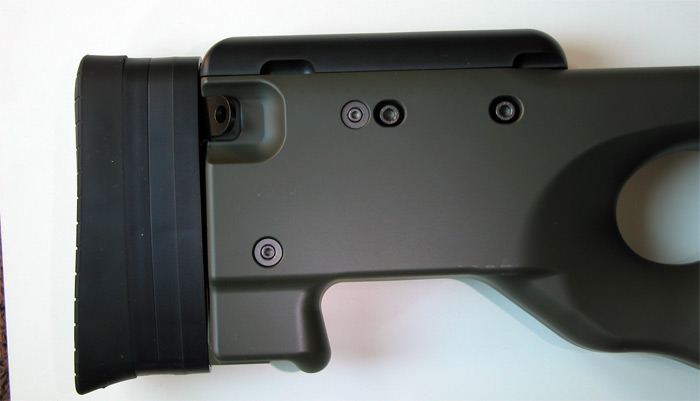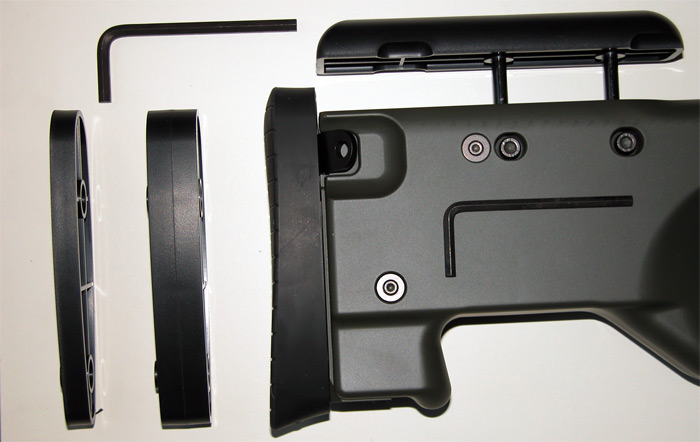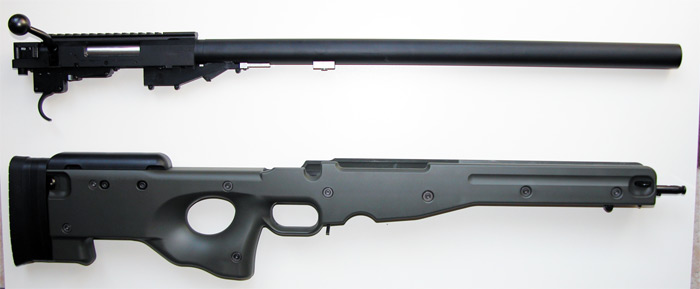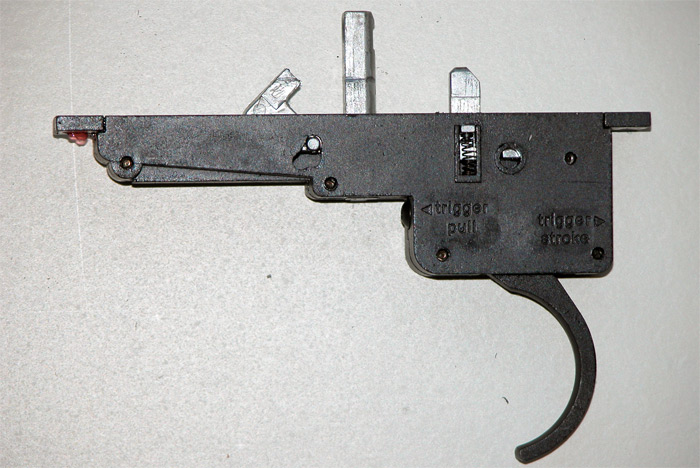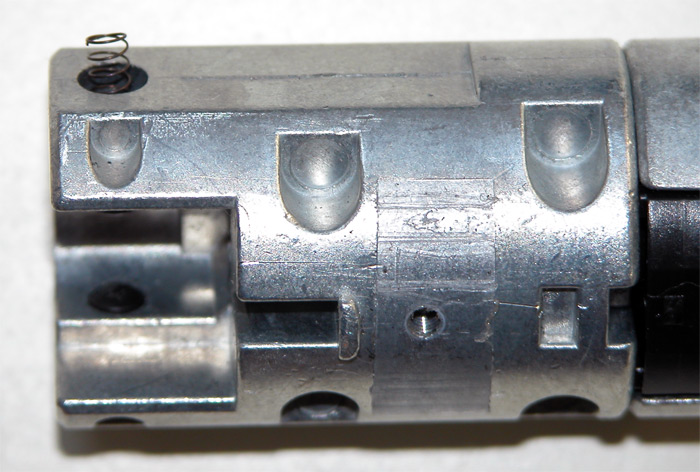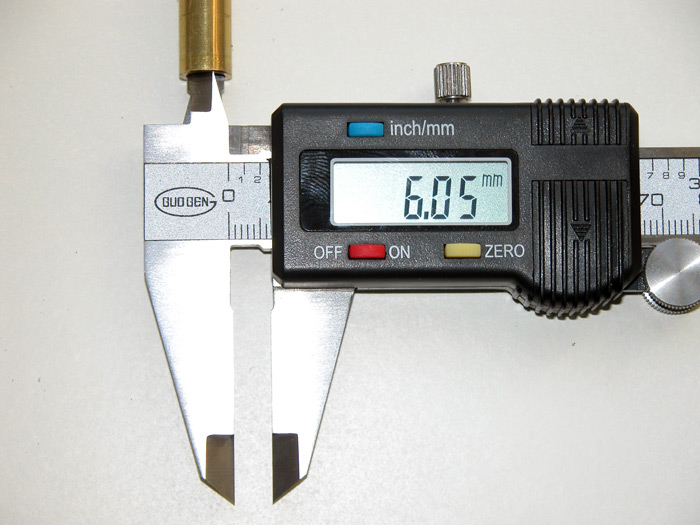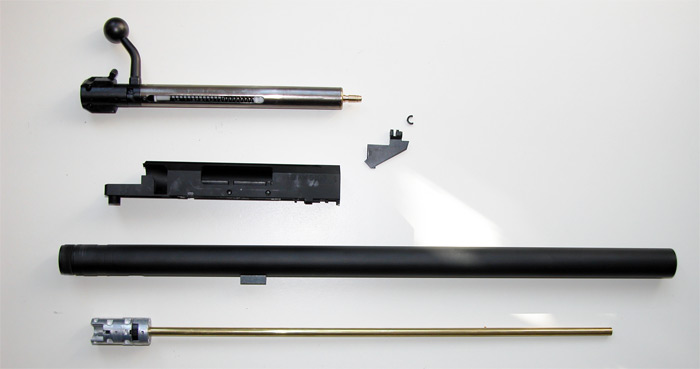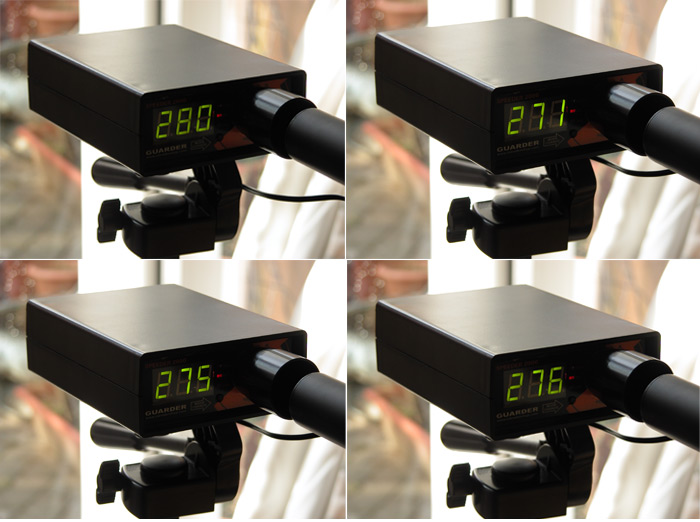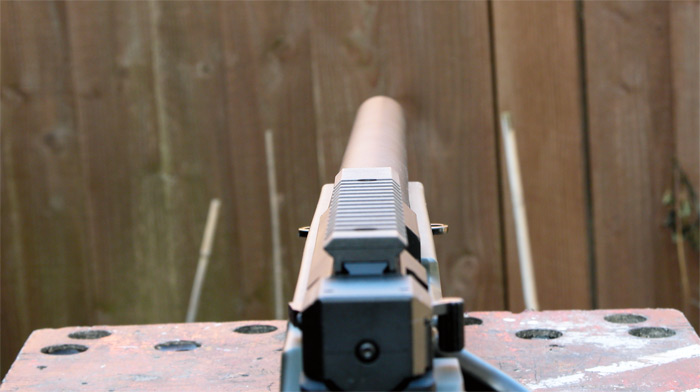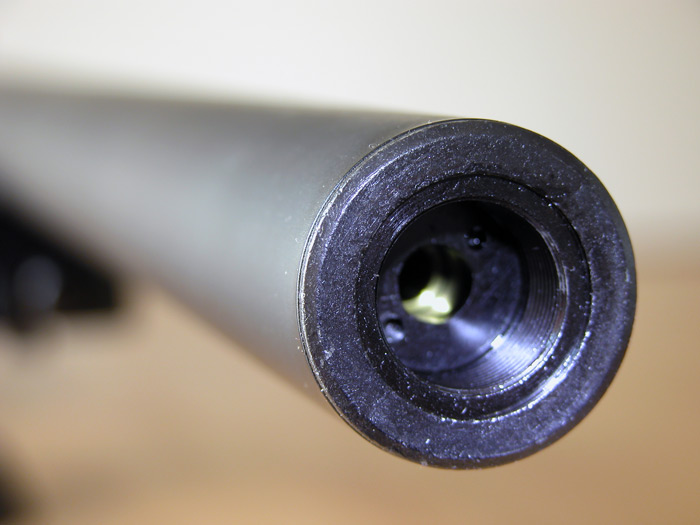By: Blackhawk 5
Table of Contents:
Introduction
First Impressions
Real Steel History
Appearance/Feel/Build Quality
Performance
Accessories
Pros & Cons
Conclusion
Introduction:
I got this gun in July 2007, about 6 months before writing this review. I got the gun at Airsoft Atlanta’s walk in store. The gun costs $270+tax. You also must buy a mini style battery, charger, and some BBs. Overall the price should be around $308. Included is the gun, 1 hi-cap magazine, manual, cleaning rod, and front sight adjustment tool.

Box it came in

Contents of box: Magazine, cleaning rod, manual, front sight adjustment tool.

Closeup of manual
First Impressions:
As a previous owner of spring pistols and MPEGs, this was my first AEG. One of the first things I noticed is that its external body is made of metal, making it more durable and a lot harder to break than its plastic counterparts. The gun features firing switches between safety, semi automatic, and full automatic. The Classic Army M15 series guns have also legal licensing from Armalite to have their trademarks displayed on the gun. It also features a unique serial number, meaning each gun made has a different serial number. The trademarks and letterings are not carved in, but does stick on pretty good and does not rub off easily. Even with all the scratches I encountered in deep foliage and bumps, the letters and trademarks stayed intact.

Rifle Side View

Trademarks Left Side

Trademarks Right Side
Real Steel History:
As you know there is no such thing as an “M-15” in real life, this gun is based on the M4a1.
COLT Weapon Systems
http://www.colt.com/mil/M4.asp
Appearance/Build Quality:
Advertised, this gun is "full metal". The foregrip, hand guards, and the stock are made out of a strong plastic, something not easily bent or broken. It weighs a bit less than 6lbs , making it durable and having a realistic feel to it. The gun itself is very strong, as I from my experiences, I dropped it on the ground several times and it had no effect on the gun. The stock, made of plastic plastic, has 4 positions to adjust depending on the style of the user. This kind of stock replicates its real-steel counterpart, making this gun suitable for close quarter and outdoor environments. The stock has a slight wobble to it. I’ve had a problem with the cap on the end of the stock which the screw was loose, and the piece rattled. It looked like this:


As you can notice, the piece was sticking out. This is an easy fix. In order to do it, take the stock out and use a small hex screwdriver to tighten it. I would suggest inspecting this after you obtain the gun, because my friend lost his in the field.
The charging handle and forward assist have no function and serves no purpose other than decoration. One downside to the build quality is that the front sling mount is a bit wobbly and makes a lot of noise while running around.

Detail Shot of charging handle area
The hop up can be adjusted by opening the dust cover and turning it clockwise to increase hop up and counter-clockwise to decrease hop up. One thing I don’t like is the chamber is covered with a cheap piece of aluminum, which the paint scratches off easily and makes some noise. The dust cover contains magnets on both ends, making it easy to open and close. An advantage of this over other M4s is that the user does not need to pull the charging handle back to adjust the hop up.

Hop up: Clockwise to turn hop up, Counter Clockwise to decrease.
Inserting the battery is a difficult thing for this gun for a first timer, like most M4 variants. The battery is stored in the foregrip. For this, you need to push down the ring and take one of the grips out. A technique I use is by taking out the bottom half of the grip, setting the battery on the top half, and the bottom half with the wires. It takes a lot of strength and practice to get it closed. After a while, it became easier to install the battery. This gun uses a mini type battery. I would reccomend to use an 8.4v or a 9.6v nunchuck battery.

Battery Compartment
Length: 30”, 33” (extended stock)
Height: 9”
Performance:
Collecting data from various retailers, the velocity averages 320 fps, and I chrono'd it at the field with an average of 319 fps. I use this as a main weapon during several games, and it’s done a hell of a job. I had a few bad encounters, first firing the gun in semi auto a couple of times, my fuse went out, so I had to go out and get a new one. I've been told to just remove the fuse altogether by some people, which I did later. The gun does not sound “weak”, or anything like a lower quality gun.
Firetest Report: At 75 feet, 6/10 bbs hit the target, and 50 feet, 9/10 hit the target. This gun has good accuracy, but some factors such as the cold weather and windy day, the results could be better. I am a bit fond of the hop up. Either the setting will be too high or the BB dips down, it's hard to find the right dial. Also you might want to consider tightening the screw on the hop up to avoid it from slipping.
Accessories:
The gun comes with a detachable carrying handle allowing the user to mount accessories. By removing the carrying handle, it has some rail mounts, ideal for mounting scopes. The carrying handle, like other M4/M16 handles features wind and elevation adjustment knobs and 2 lines of view for either closer or longer distances. Personally I don't even consider adjusting the elevation and wind knobs. It also has armalite trademarks on it. The gun also has 2 sling mounts: one on the stock and the other on the barrel to add a sling to it. You will need to buy an adapter for it if you wish to mount a 1pt. sling. The barrel has 14mm counterclockwise threading which makes it able to add a silencer or barrel extension to it. Before this is done, dip the flash hider into near boiling water to break the bonds of the glue. The gun also features a bayonet lug, for those who want to attach a bayonet to the gun. There is another gun by CA similar to this except with additional RIS mounts on the handgrip and PEQ box for $90 more.
The magazine included is a 300 round hi-cap with a light gray color. I added a homemade mag-pul to it for quick and easy draw (it has since changed from the time I took the picture). I’ve had little to no problems with the Classic Army magazine, feeding flawlessly almost all the time. It is easy to get spare magazines as low as $5 since it is TM compatible. I own 2 M16 magazines, one D-boys and the other an A&K, both TM compatible and fits well in the M15. Later I bought a box of MAG Midcaps which also works with the gun.

Adjustable Stock

A look down the sights

Magazine Chamber

Sling Mount front

Carrying Handle/Iron Sights with armalite logo

Disassembeled
Pros&Cons:
Pros:
-Full Metal body, solid and durable
-Registered Armalite Trademarks and unique serial number
-Compact design and adjustable stock, adaptable for outdoors and CQB
-Metal Bushings
-Good accuracy
-Adjustable Hop up
-Metal Spring Guide
-TM Compatible
-No barrel wobble
Cons:
-Wobbly Stock/Front sling attachment/Butt Plate
-Paint scratching off some places
-Charging Handle and Forward assist serves no purpose
-Weak fuse (consider removing it and just use a direct connection)
-Hard time installing the battery
-Decent Hop up
-Lack of rails on the handgrip
Conclusion:
Overall, this gun is amazing. I would recommend it to anyone new to airsoft, especially ones who currently own any MPEG or lower quality gun, who are looking for a new gun. Both the internals and externals are reliable. For the batteries, I would recommend an 8.4 or 9.6 volt battery. I still have this gun stock and it is still intact. I’d take this over a TM version of this because of better externals, slightly better performance (in terms of fps) and no barrel wobble at all. The M15 series are one of the best models made by Classic Army, and I highly recommend this gun.
Externals: 9/10
Internals: 7.5/10
Overall: 8.5/10



















